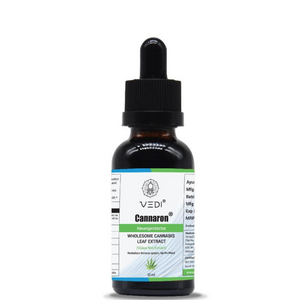Everything you need to know about cannabis:

Introduction
Cannabis, often referred to as marijuana, has a rich historical background that spans cultures and periods. With evolving perceptions and increasing cannabis legalization efforts, the landscape surrounding cannabis has transformed significantly.
This article delves into the definition and overview of cannabis, its historical usage, and the changing attitudes toward it as it gains acceptance for its potential health benefits. Explore the cannabis meaning, its historical roots, and the dynamic landscape of cannabis sativa and cannabis indica. Discover the intricate interplay of cannabinoids within the cannabis plant, from the therapeutic potential of cannabis oil to the varied medical uses of cannabis.
What is Cannabis?
Cannabis comprises a genus of flowering plants belonging to the Cannabaceae family. Within this family, two prominent species stand out: Cannabis sativa and Cannabis indica. These species are further differentiated by their unique cannabinoid profiles, which contribute to their various effects and applications.
Central to the allure of cannabis are its compounds – cannabinoids, terpenes, and flavonoids. Cannabinoids, the most well-known of which are cannabidiol (CBD) and tetrahydrocannabinol (THC) which interact with the human endocannabinoid system.

History of Cannabis
A journey into the historical annals unveils the status of cannabis as an ancient companion of human civilization. From the rice fields of China to the mystic rituals of India, cannabis has woven itself into the fabric of diverse cultures. The trail of cannabis continues through the pages of history, touching upon various civilizations and their unique relationships with the plant.
In India, ancient texts like the Vedas celebrated cannabis as a sacred herb, intertwined with spirituality and divinity. The cannabis sativa flower, with its distinctive appearance and properties, has long captured the attention of people across the country.
Beyond its cultural significance, cannabis in India has also been recognized for its potential medical uses, a facet that has sparked discussions and debates about its legality and benefits. The world of alternative medicine also embraces cannabis, as evidenced by the association of cannabis indica with homeopathy.
What are the components of Cannabis?
Cannabis is composed of various chemical constituents, each contributing to its unique effects and potential applications. Two primary components that define its nature are cannabidiol (CBD) and tetrahydrocannabinol (THC).
CBD (Cannabidiol)
Cannabidiol, or CBD, stands as a prominent compound within cannabis. It is non-psychoactive, meaning it doesn't induce the characteristic "high" associated with cannabis use.
Characteristics of CBD:
- Therapeutic potential: CBD has garnered attention for its potential in various therapeutic applications, prompting a surge in research and product development.
- Interactions with the endocannabinoid system: CBD interacts with the body's endocannabinoid system, influencing various physiological processes.
- Non-intoxicating: Unlike THC, CBD does not produce intoxicating effects, making it appealing for individuals seeking the potential benefits of cannabis without altered consciousness.
THC (Tetrahydrocannabinol)
Tetrahydrocannabinol, or THC, is the psychoactive compound responsible for the "high" commonly associated with cannabis use.
Characteristics of THC:
- Psychoactive effects: THC interacts with brain receptors, leading to altered perceptions, mood shifts, and heightened sensory experiences.
- Euphoria and relaxation: THC induces feelings of euphoria and relaxation, contributing to its appeal for recreational use.
- Medical applications: Beyond the psychoactive cannabis effects, THC has shown potential for pain relief, appetite stimulation, and managing certain medical conditions.
Interplay and Entourage Effect
CBD and THC are just two of the many compounds within cannabis. The interaction between these compounds, as well as terpenes and other cannabinoids, creates what's known as the "entourage effect." This phenomenon suggests that these compounds work synergistically, potentially enhancing each other's effects and overall impact.
These interactions give rise to an array of effects, ranging from the mesmerizing psychoactive experiences to the potential therapeutic benefits that have ignited discussions surrounding cannabis oil, cannabis medical uses, and even its potential role in addressing cancer symptoms.

Health Benefits of Cannabis
Cannabis, often regarded through the lens of recreational use, has also emerged as a compelling arena of scientific exploration due to its potential health benefits. This section navigates the diverse avenues where the compounds of cannabis, particularly cannabinoids like CBD and THC, may offer therapeutic relief. From managing physiological conditions to addressing mental well-being, the health benefits of cannabis are gradually emerging as a domain of profound significance.
1. Lowering Blood Pressure
Research has illuminated the potential of cannabis to impact cardiovascular health positively. Certain cannabinoids, such as CBD, demonstrate vasodilatory properties, leading to improved blood flow and potentially contributing to lowering blood pressure. This effect not only highlights the capacity of cannabis to alleviate hypertension but also signifies its potential in promoting heart health.
2. Reducing Inflammation
The anti-inflammatory prowess of cannabis stems from cannabinoids like CBD and THC. These compounds interact with immune responses, modulating inflammation pathways. By mitigating chronic inflammation, cannabis oil and tea showcases promise in managing conditions ranging from arthritis to autoimmune disorders.

3. Preventing Relapse in Drug and Alcohol Addiction
Surprising as it may seem, cannabis-based interventions have displayed the potential in preventing relapse among individuals recovering from substance addiction. CBD, in particular, exhibits properties that diminish drug-seeking behaviors, underscoring its role in reshaping addiction treatment strategies.
4. Treating Anxiety Disorders
Anxiety disorders cast a wide net over mental health concerns, and here, too, the compounds in cannabis offer solace. The anxiolytic effects of cannabis present a natural avenue for addressing generalized anxiety disorder, social anxiety disorder, and even post-traumatic stress disorder (PTSD). Using cannabis edibles for anxiety works wonders.
5. Treating Gastrointestinal (GI) Disorders
The intricate connection between the endocannabinoid system and the gut hints at the potential of cannabis in managing gastrointestinal disorders. CBD and THC's anti-inflammatory properties come into play, potentially ameliorating conditions such as Crohn's disease and irritable bowel syndrome.
6. Preventing Seizures
Perhaps one of the most widely recognized health benefits of cannabis oil is its role in epilepsy treatment. CBD, with its anticonvulsant properties, has paved the way for FDA-approved medications like Epidiolex, offering hope to patients with drug-resistant forms of epilepsy.
7. Fighting Cancer
The potential of cannabis in the realm of cancer is marked by its anti-tumor properties, as certain cannabinoids exhibit the ability to suppress tumor growth and inhibit metastasis. Although more research is needed to know if cannabis can cure cancer, this avenue holds promise for future oncology treatments.
8. Help lose weight
Intriguingly, the influence of cannabis on weight is multifaceted. While often associated with inducing appetite ("the munchies"), cannabis compounds have also been linked to lower body mass index (BMI) and reduced obesity rates.
9. Regulating and Preventing Diabetes
Emerging studies suggest a connection between cannabis use and improved insulin resistance, indicating its potential in diabetes management and prevention. However, the exact mechanisms warrant further exploration.
10. Helps treat Depression
The cannabis effects extend to mental health, with certain cannabinoids exhibiting potential antidepressant effects. By impacting mood regulation and brain chemistry, cannabis compounds open doors for novel approaches to managing depression.
Side Effects of Cannabis
Cannabis, while celebrated for its potential health benefits, also comes with a set of potential side effects like cannabis withdrawal symptoms that warrant cautious consideration. As individuals explore its applications, understanding these side effects is paramount to responsible consumption and informed decision-making.
Common Cannabis Side Effects:
- Cognitive impairment: Cannabis use can lead to impaired cognitive function, affecting memory, attention, and decision-making. This effect is particularly noticeable under the influence of THC.
- Breathing problems: Individuals who engage in frequent marijuana smoking can encounter respiratory issues similar to those found in tobacco smokers.
- Increased heart rate: THC's impact on heart rate can lead to tachycardia, an elevated heart rate. This effect can be more pronounced in inexperienced users or those with preexisting cardiovascular conditions.
- Anxiety and paranoia: For some individuals, especially those prone to anxiety, cannabis use can trigger heightened feelings of anxiety, and in some cases, paranoia.
Nausea and vomiting: Prolonged and consistent use of marijuana can potentially trigger the development of Cannabinoid Hyperemesis Syndrome in certain individuals. This syndrome manifests as recurring bouts of intense nausea, vomiting, and dehydration.

Precautions while Consuming Cannabis
Engaging with cannabis use requires a measured approach to ensure both safety and a positive experience. Adhering to relevant precautions is vital, particularly for those new to cannabis or those with specific health conditions.
Relevant Precautions:
- Start low and go slow: Especially for new users, starting with a low dosage and gradually increasing it allows for better tolerance assessment and minimizes the risk of adverse effects.
- Know your limits: Being aware of your tolerance and susceptibility to the effects of cannabis helps prevent overconsumption and its associated discomfort.
- Consider your health status: Individuals with preexisting mental health conditions, heart issues, or respiratory problems should consult a medical professional before using cannabis, as it could exacerbate these conditions.
- Avoid mixing with other substances: Combining cannabis with alcohol or other substances can amplify its effects and increase the risk of adverse reactions.
- Be mindful of legal status: Comprehending the legal status of cannabis in your jurisdiction is crucial to avoid legal complications.
Dosage of Cannabis
Determining the appropriate dosage of cannabis is a dynamic interplay influenced by individual factors such as tolerance, body weight, metabolism, and the specific strain consumed.
Factors to Consider:
- Strain potency: Different cannabis strains contain varying levels of cannabinoids, affecting the potency of the product.
- Method of consumption: The way cannabis is consumed – whether smoked, vaporized, ingested, or applied topically – impacts the speed and intensity of its effects.
- Individual tolerance: Individuals with prior cannabis experience might have higher tolerances, allowing them to handle larger doses.
- Body weight and metabolism: Body weight and metabolism influence how the body processes and responds to cannabis.
Whether you use cannabis edibles, cannabis oil, cannabis leaves, cannabis seeds, or cannabis tea, responsible consumption fosters a safe and enjoyable experience.
Conclusion
From its diverse components, including the non-psychoactive CBD and the famed THC, to its potential health benefits that span the realms of physical and mental well-being, cannabis beckons us to uncover its potential.
Yet, as we embrace the benefits, we should also acknowledge the responsibility. Cannabis, like any substance, presents potential side effects and nuances that require our attention and caution. Through informed consumption and adherence to precautions, we navigate its pathways with wisdom and respect for our well-being.
FAQs
What is cannabis?
Cannabis is a genus of flowering plants within the Cannabaceae family, known for its diverse chemical compounds, including cannabinoids like CBD and THC. It has been used for various purposes across cultures, from medicine to recreation.
What does cannabis mean in drugs?
Cannabis, in drug terms, refers to the dried flowers, leaves, stems, and seeds of the Cannabis plant. These parts contain cannabinoids that have psychoactive and therapeutic effects when consumed.
What do cannabinoids do to the body?
Cannabinoids interact with the endocannabinoid system in the body, influencing various physiological processes.. They can affect mood, pain perception, appetite, and immune responses, contributing to both psychoactive and potential therapeutic effects.
What is cannabis also known as?
Cannabis is known by various names, including marijuana, weed, pot, ganja, and hemp, reflecting its diverse applications and cultural associations.
Why is cannabis called Ganja?
Cannabis is called "Ganja" in some cultures, notably in India, due to its historical and cultural significance. The term "ganja," rooted in the ancient language Sanskrit, has been passed down through generations. In precise terms, "ganja" pertains to the blossoming buds of the cannabis flower.
What are the five names for cannabis?
Cannabis is known by different names globally: marijuana, weed, pot, ganja, and hemp. These terms reflect the plant's various uses and the linguistic diversity of its cultural associations.
What is the Indian name?
Cannabis is known by different names in India, with "ganja" and "bhang" being commonly used terms. These names are deeply rooted in Indian culture and traditions.
What is the most common cannabis?
The most common types of cannabis are Cannabis sativa, Cannabis indica, and Cannabis ruderalis. These variations differ in appearance, chemical composition, and effects.
How to make cannabis oil?
Cannabis oil can be made by extracting the beneficial compounds from the plant using various methods such as solvent extraction or infusion with carrier oils. It's important to follow safe practices and guidelines when making cannabis oil.
Is cannabis sativa legal?
The legal status of cannabis sativa varies by jurisdiction. In some places, it's legal for recreational or medicinal use, while in others, it remains prohibited. Laws and regulations surrounding cannabis are evolving worldwide.
Are marijuana and cannabis the same thing?
The term "cannabis" encompasses all products extracted from the Cannabis sativa plant. "Marijuana," on the other hand, pertains to elements or items sourced from the Cannabis sativa plant that hold significant concentrations of tetrahydrocannabinol (THC).
Is cannabis a medicinal herb in Ayurveda?
Yes, cannabis is considered a medicinal herb in Ayurveda, the traditional Indian system of medicine. It's known as "Vijaya" and is utilized for various therapeutic purposes in Ayurvedic practices.
Which Ayurveda book mentions cannabis as medicine?
Cannabis is mentioned in various ancient Ayurvedic texts and is first mentioned in the Sarngadhara Samhita. These texts discuss the potential medicinal applications of cannabis in the context of Ayurvedic practices.
References:
- Pacher P, Bátkai S, Kunos G. Cardiovascular pharmacology of cannabinoids. Handb Exp Pharmacol. 2005;(168):599-625. doi: 10.1007/3-540-26573-2_20. PMID: 16596789; PMCID: PMC2228270.
- Kogan NM, Mechoulam R. Cannabinoids in health and disease. Dialogues Clin Neurosci. 2007;9(4):413-30. doi: 10.31887/DCNS.2007.9.4/nkogan. PMID: 18286801; PMCID: PMC3202504.
- Prud'homme M, Cata R, Jutras-Aswad D. Cannabidiol as an Intervention for Addictive Behaviors: A Systematic Review of the Evidence. Subst Abuse. 2015 May 21;9:33-8. doi: 10.4137/SART.S25081. PMID: 26056464; PMCID: PMC4444130.
- National Academies of Sciences, Engineering, and Medicine; Health and Medicine Division; Board on Population Health and Public Health Practice; Committee on the Health Effects of Marijuana: An Evidence Review and Research Agenda. The Health Effects of Cannabis and Cannabinoids: The Current State of Evidence and Recommendations for Research. Washington (DC): National Academies Press (US); 2017 Jan 12. 4, Therapeutic Effects of Cannabis and Cannabinoids. Available from: https://www.ncbi.nlm.nih.gov/books/NBK425767/
- Cannabis and Diabetes, Diabete.co.uk. Available at: https://www.diabetes.co.uk/recreational-drugs/cannabis.html
- NIDA. 2019, December 24. Cannabis (Marijuana) DrugFacts. Retrieved from https://nida.nih.gov/publications/drugfacts/cannabis-marijuana on 2023, August 18







